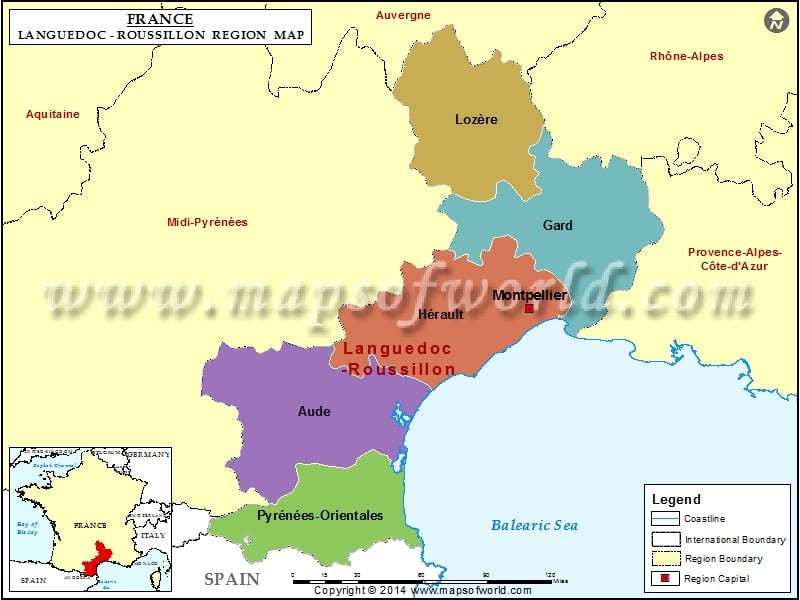Map of Languedoc-Roussillon Region

View detailed world maps that offer a global perspective—political, physical, and more.
Explore maps that visualize data on topics like population, climate, economy, and beyond.
Navigate the world with maps that guide your journeys—country and city maps for travelers.
Learn, discover, and share with educational maps, geography trivia, and cartographic insights—ideal for classrooms and curious minds.
FBrowse quick-reference lists for airports, area codes, capitals, postal codes, time zones, and more—organized for easy access.
Explore powerful mapping tools and services.
Order custom maps tailored to your most specific needs, whether for business, education, travel, or more!
Learn moreView detailed world maps that offer a global perspective—political, physical, and more.
Explore maps that visualize data on topics like population, climate, economy, and beyond.
Navigate the world with maps that guide your journeys—country and city maps for travelers.
Learn, discover, and share with educational maps, geography trivia, and cartographic insights—ideal for classrooms and curious minds.
FBrowse quick-reference lists for airports, area codes, capitals, postal codes, time zones, and more—organized for easy access.
Explore powerful mapping tools and services.

The capital of Languedoc – Roussillon region is Montpellier. The departments of the region include Aude, Gard, Herault, Lozere, Pyrenees – Orientales. Languedoc – Roussillon is divided into 14 arrondissements, 186 cantons and 1,545. It shares its borders with Spain, Andorra and the Mediterranean Sea. The total area covered by this region is around 27,300 km2.
Languedoc – Roussillon is made up of a number of provinces. Around 68.7 % of the region is made up of the province of Languedoc. 17.9% of the region is made up of the province of Gevaudan. The remaining 13.4% of the region is made up of culturally Catalan pays.
At present, the regional President of the region is Georges Freche. Freche has embarked on a complete overhaul of the region. The flag of Languedoc – Roussillon was also changed. The new flag has no reference to the old provinces. The President of Languedoc – Roussillon also wanted to change the name of the region to remove the duality and bring about uniformity.
The Romans had created the name Septimania. This name was used in the early Middle Ages. This name would have helped in removed the difference between the Occitan and Catalan speaking areas of this region. But this name has not been in use since the 9th century.
The population of the region opposed the use of the name and so gradually the use of the name was gradually cut off.
Languedoc-Roussillon Railway Map shows the railway lines, major towns of the region, the regional boundary, and the regional capital.
Languedoc-Roussillon Road Map shows the major roads, highways, major towns of the region, the regional boundary, and the regional capital.